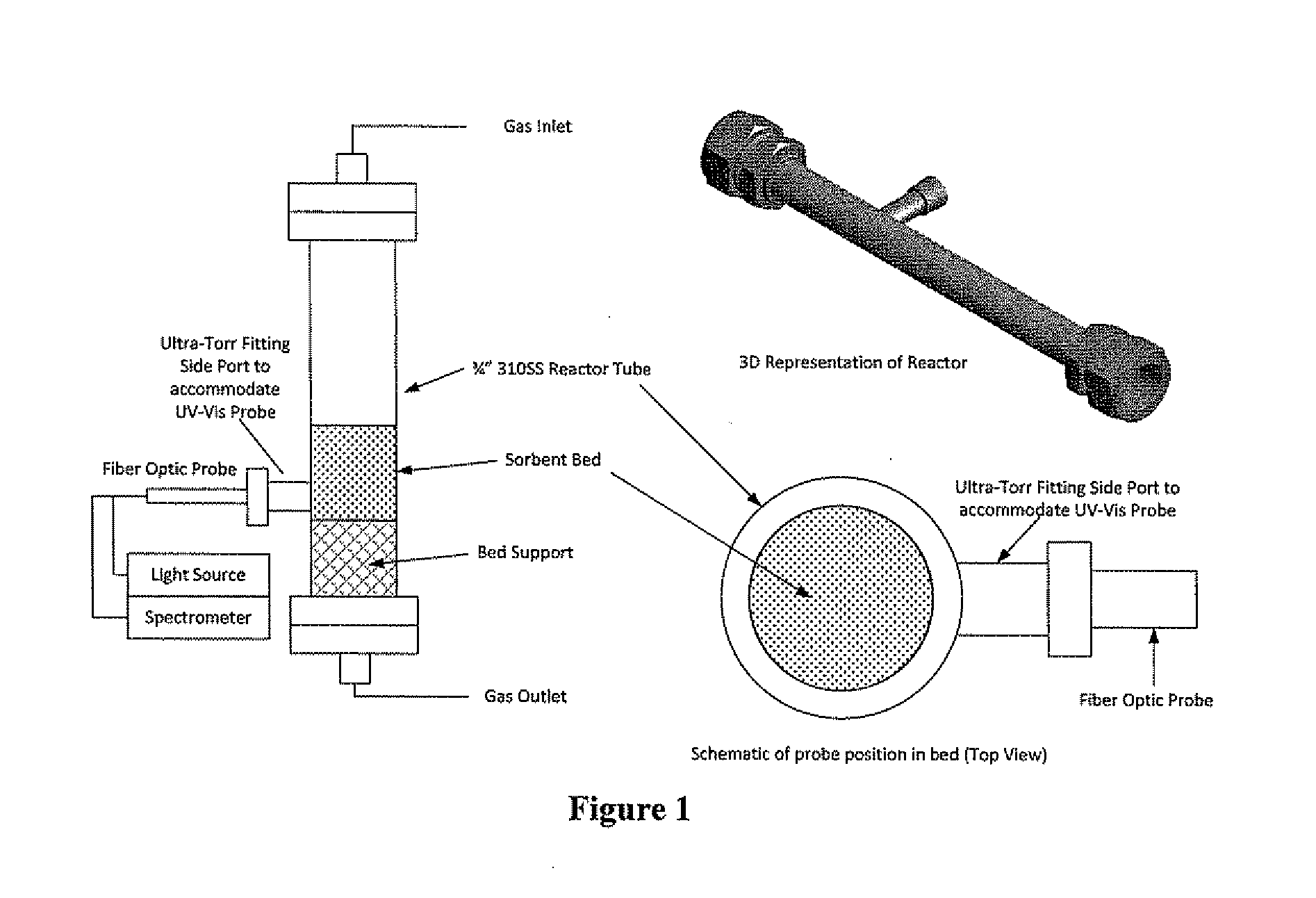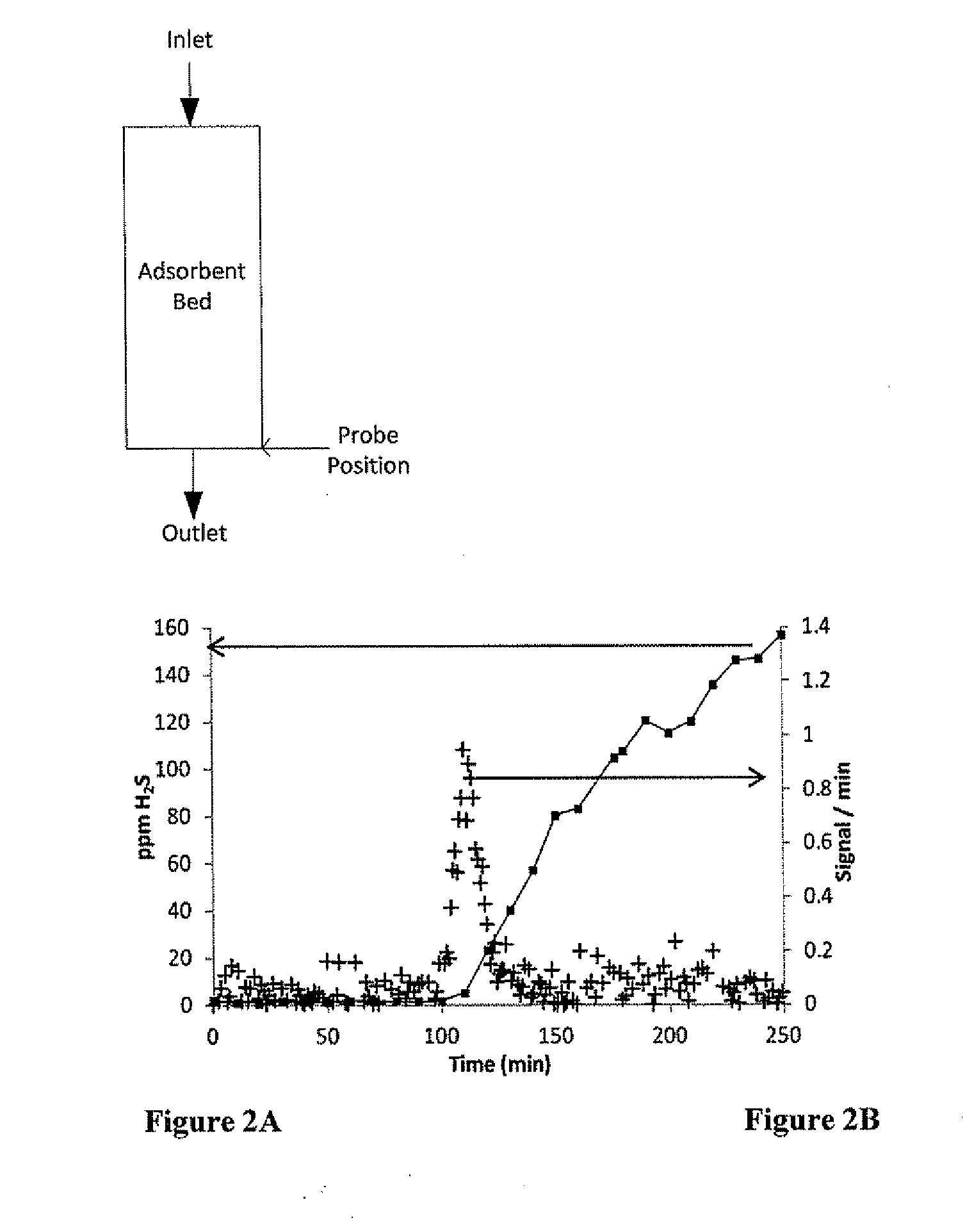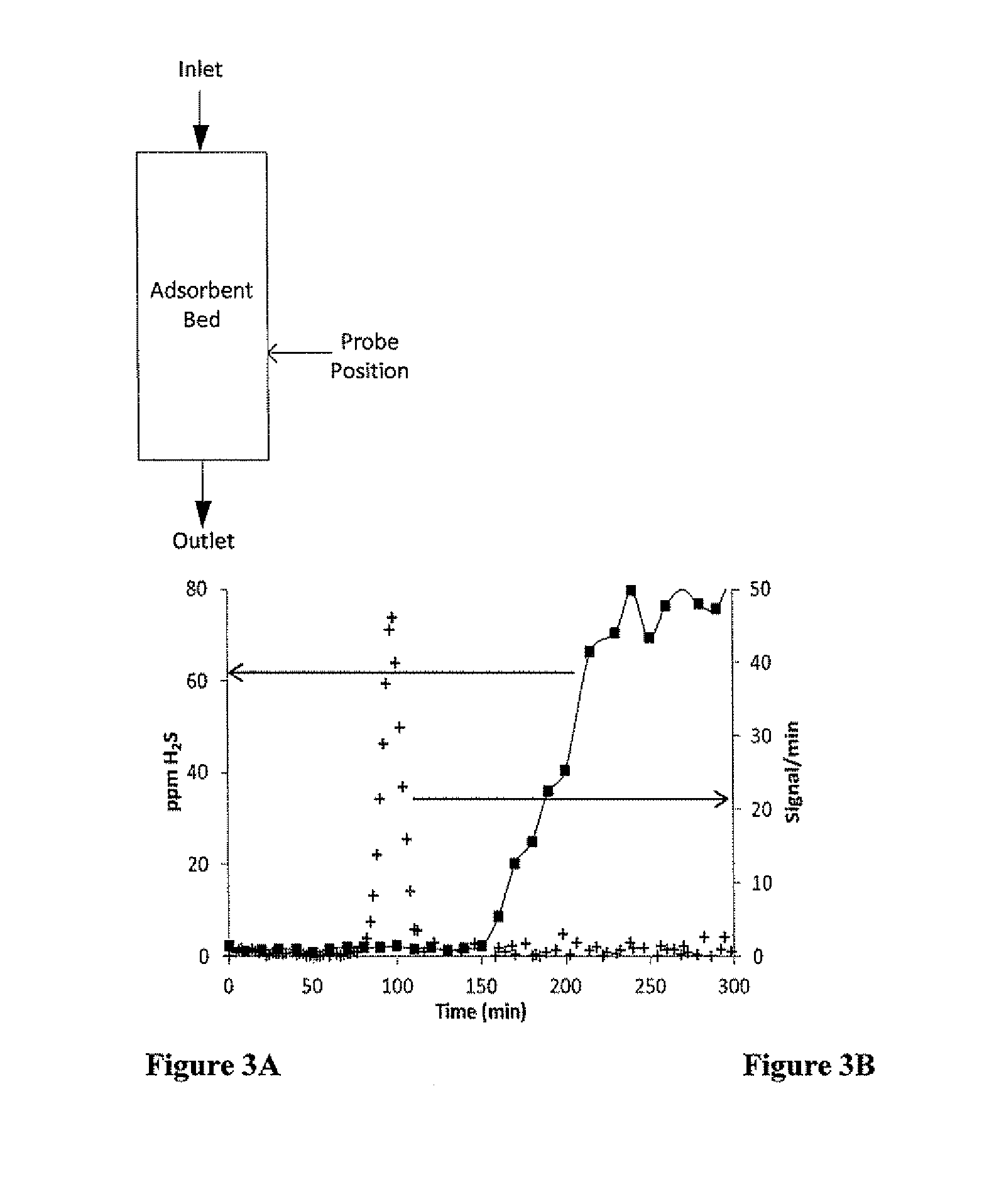Direct in situ monitoring of adsorbent and catalyst beds
- Summary
- Abstract
- Description
- Claims
- Application Information
AI Technical Summary
Benefits of technology
Problems solved by technology
Method used
Image
Examples
example 1
Predicting Breakthrough on CuZn Supported on SiO2
[0088]The ability to use in situ UV-Vis spectroscopy to predict breakthrough in a CuZn / SiO2 sorbent bed was first evaluated by conducting a simultaneous breakthrough and spectroscopy study on 15 wt % CuZn supported on SiO2 with a feed of 870 ppm H2S in H2 at a face velocity of 10 cm / s and a residence time of 1 second at room temperature. Under these conditions, the bed length was 10 cm and the probe was positioned in the last 0.6 cm of the bed. The spectrometer acquisition conditions were optimized for the experimental setup and spectra were collected every 2 minutes over the course of the breakthrough test. A spectrum of the fresh sorbent was used as the reference spectrum for the system when calculating absorbance.
[0089]Spectra of the CuZn / SiO2 sorbent before breakthrough (t=58 min, FIG. 4 maroon line) and after saturation (t=72 min, FIG. 4 blue line) are presented in FIG. 4. The small peaks present in the spectra of the fresh sorb...
example 2
Predicting Breakthrough on CuZn Supported on SiO2 at Lower H2S Concentrations
[0094]The above results show that UV-Vis spectroscopy can be used to identify the saturation of a CuZn / SiO2 adsorbent bed during the removal of H2S. These experiments, however, were conducted at a high concentration (870 ppm) of H2S while the sorbent bed will likely be used at lower concentrations. The first experiment at lower concentration was conducted with a feed of 162 ppm H2S in H2, and the probe was placed in the last 0.6 cm of the 5 cm bed. The H2S breakthrough curve and derivative of the integrated spectral area are shown in FIG. 8. As with the test conducted at 870 ppm, the UV-Vis sensing method was able to predict H2S breakthrough as indicated by the maximum of the spectral area derivative at the breakthrough point. A similar result was obtained for the test conducted with an inlet H2S concentration of 63 ppm (FIG. 9). During this test, the maximum of the UV-Vis signal derivative curve occurred a...
example 3
Predicting Breakthrough on CuZn Supported on SiO2 in the Presence of CO2, Moisture, and CO
[0095]The previous data showed that breakthrough could be predicted in the absence of any competing species that could induce a surface chemistry change such as CO2, CO, and moisture. The presence of 20% CO2 and 20% CO2 at 50% relative humidity did not have an impact on the ability of the derivative of the integrated spectrum area to predict breakthrough (FIGS. 10 and 11). For both of these tests spectral changes significant enough to impact the sensing method were not observed. The presence of CO2 in the feed resulted in the formation of a small peak centered below 300 nm. The magnitude of this peak was significantly less than the peak resulting from the sulfidation of the sorbent.
[0096]The final test to screen whether the presence of other components impact the ability of the method to sense breakthrough was conducted with an atmosphere containing 250 ppm H2S, 20% CO2, 20% CO, 20% N2, and a b...
PUM
 Login to View More
Login to View More Abstract
Description
Claims
Application Information
 Login to View More
Login to View More - R&D
- Intellectual Property
- Life Sciences
- Materials
- Tech Scout
- Unparalleled Data Quality
- Higher Quality Content
- 60% Fewer Hallucinations
Browse by: Latest US Patents, China's latest patents, Technical Efficacy Thesaurus, Application Domain, Technology Topic, Popular Technical Reports.
© 2025 PatSnap. All rights reserved.Legal|Privacy policy|Modern Slavery Act Transparency Statement|Sitemap|About US| Contact US: help@patsnap.com



